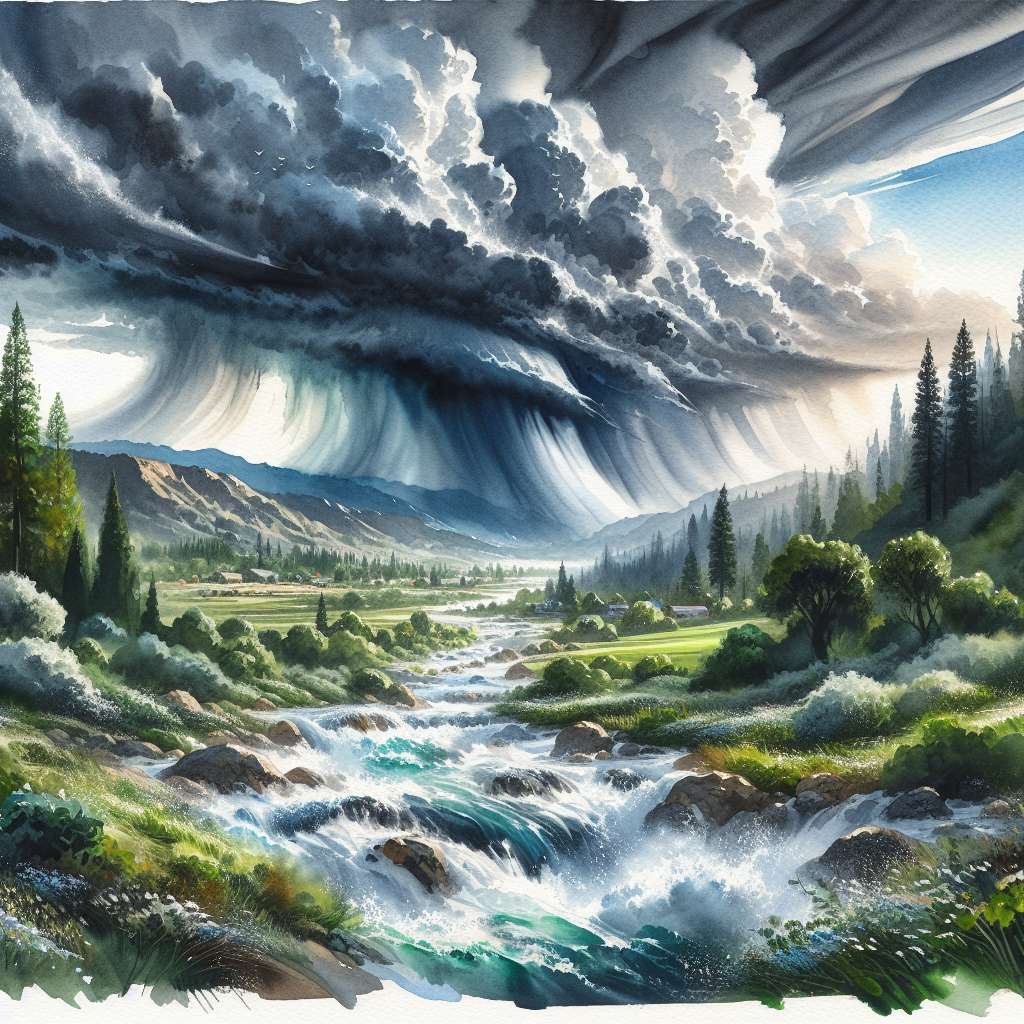
Urgent: California’s Atmospheric Rivers Threaten Chaos Across the State
- Governor Gavin Newsom has activated California's Emergency Operations Center to address potential flooding, road closures, and power outages.
- The first storm hit Northern California with 70 mph wind gusts in the Bay Area, while Southern California prepares for 1 to 3 inches of rain, with local areas potentially seeing up to 5 inches.
- The historical Great Flood of 1862 serves as a stark reminder, having transformed California's Central Valley into an inland sea, covering an area 300 miles long and 20 miles wide.
The state of California is once again on high alert as it prepares for a series of powerful atmospheric rivers. These storms, which began making landfall on a Wednesday, are expected to bring turbulent weather across the state, potentially lasting for up to two weeks. The situation has prompted federal, county, and municipal officials to respond swiftly to early signs of flooding, road closures, and power outages. Governor Gavin Newsom has activated California’s Emergency Operations Center, emphasizing the need for a proactive approach to emergency response efforts.
The first storm primarily impacted Northern California, with the National Weather Service issuing multiple flood advisories, winter storm, and high wind warnings. Wind gusts in the Bay Area reached up to 70 mph, and further power outages were anticipated. As the storm moved south, Southern California braced for its impact, with expectations of 1 to 3 inches of rain, potentially reaching up to 5 inches locally. The second storm, forecasted to arrive late Sunday, poses a greater threat to Southern California, with predictions of massive amounts of rain and heavy snow in the mountains east of Los Angeles.

The Historical Context: The Great Flood of 1862
The current atmospheric river events evoke memories of the Great Flood of 1862, a catastrophic event that devastated California over a century ago. Beginning in late November 1861, heavy snow in Northern California and Oregon, followed by a dramatic rise in temperatures, led to a deadly scenario. The series of storms that followed produced precipitation levels that exceeded those experienced on average only once every 500 to 1,000 years.
The flood transformed much of California’s Central Valley into an inland sea, covering an area approximately 300 miles long and 20 miles wide, with depths reaching up to 30 feet. Sacramento, the state capital, was virtually underwater, forcing newly elected governor Leland Stanford to travel by rowboat for his inauguration. The flood’s impact was felt across the state, with Southern California counties also suffering significant damage, although the region’s sparse population at the time mitigated the devastation.
- 🌞 Positively proactive measures underway by California......
- 🌧 Chaos looming: Are we truly prepared this time?......
- 🔍 Reflecting on history, are we repeating 1862's failures?......
Modern Preparations and Challenges
In preparation for the current storms, California has mobilized fire crews, swift water rescue teams, and other first responders. Supplies such as sandbags and snowplows are being distributed statewide. The state collaborates intensively with local entities to ensure the availability of critical safety gear and assets. Despite these efforts, officials are aware of the challenges posed by aging levees and the spread of misinformation on social media. Contrary to rumors, this is not a megaflood or “ARkStorm” scenario, though residents are urged to take the situation seriously.
The state is also addressing infrastructure concerns, such as the ongoing repair of Paul?s Slide on Highway 1, which was damaged by a landslide last year. In Monterey and Santa Cruz counties, officials are monitoring areas prone to flooding, while in Mendocino County, the Navarro and Russian rivers are forecast to reach flood stage. The San Diego River is also expected to overflow its banks, as it did during historic rains last week.
Our Advice on the City
For those visiting Los Angeles during this period, it is crucial to stay informed about weather updates and heed any advisories issued by local authorities. Travelers should consider carrying emergency supplies, including water, non-perishable food, and a flashlight, in case of power outages or road closures. For expert travelers, exploring the city’s indoor attractions, such as museums and galleries, can provide a safe and enriching experience during inclement weather.
In conclusion, California’s atmospheric rivers serve as a reminder of the state’s vulnerability to extreme weather events. While modern infrastructure and emergency response efforts have improved since the Great Flood of 1862, the challenges posed by these storms remain significant. As we reflect on the past and prepare for the future, it is essential to remain vigilant and proactive in safeguarding our communities against the forces of nature.
Trending now








